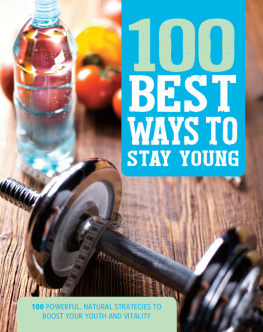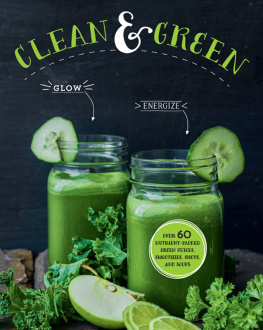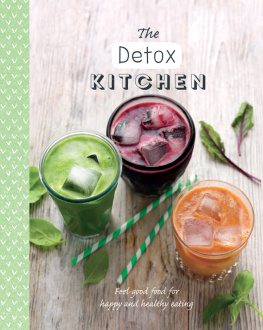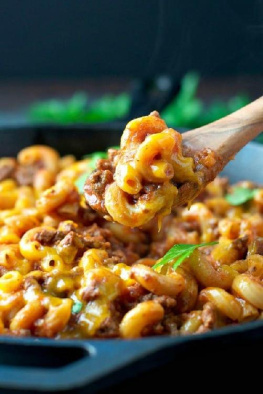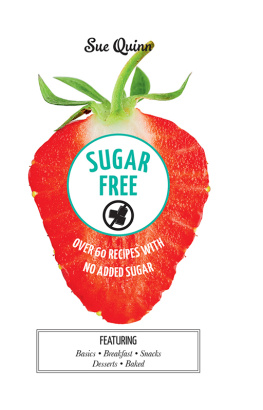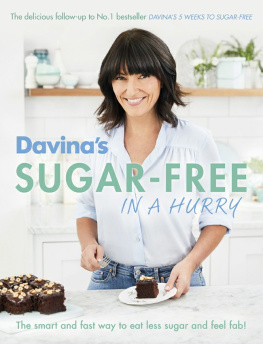

This digital edition published by Parragon Books Ltd in 2015 and distributed by
Parragon Inc.
440 Park Avenue South, 13th Floor
New York, NY 10016
www.parragon.com/lovefood
LOVE FOOD is an imprint of Parragon Books Ltd
Copyright Parragon Books Ltd 2014
LOVE FOOD and the accompanying heart device is a registered trademark of Parragon Books Ltd in the USA, the UK, Australia, India, and the EU.
All rights reserved. No part of this publication may be reproduced, stored in a retrieval system, or transmitted, in any form or by any means, electric, mechanical, photocopying, recording, or otherwise, without the prior permission of the copyright holder.
10 9 8 7 6 5 4 3 2
ISBN: 978-1-4748-0010-5
New recipes and food styling by Georgina Besterman
Created and produced by Pene Parker and Becca Spry
New photography by Haarala Hamilton
Notes for the Reader
This book uses standard kitchen measuring spoons and cups. All spoon and cup measurements are level unless otherwise indicated. Unless otherwise stated, milk is assumed to be whole, eggs are large, individual vegetables are medium, and pepper is freshly ground black pepper.
Unless otherwise stated, all root vegetables should be peeled prior to using.
Garnishes, decorations, and serving suggestions are all optional and not necessarily included in the recipe ingredients or method. Any optional ingredients and seasoning to taste are not included in the nutritional analysis. The times given are only an approximate guide. Preparation times differ according to the techniques used by different people and the cooking times may also vary from those given. Optional ingredients, variations, or serving suggestions have not been included in the time calculations.
Where the author has made all reasonable efforts to ensure that the information contained in this book is accurate and up to date at the time of publication, anyone reading this book should note the following important points:
* Medical and pharmaceutical knowledge is constantly changing and the author and the publisher cannot and do not guarantee the accuracy or appropriateness of the contents of this book;
* In any event, this book is not intended to be, and should not be relied upon, as a substitute for advice from your healthcare practitioner before making any major dietary changes;
* Food Allergy Disclaimer: The author and the publisher are not responsible for any adverse reactions to the recipes contained herein.
* The statements in this book have not been evaluated by the U.S. Food and Drug Administration.
This book is not intended to treat, cure or prevent any disease.
For the reasons set out above, and to the fullest extent permitted by law, the author and the publisher: (i) cannot and do not accept any legal duty of care or responsibility in relation to the accuracy of appropriateness of the contents of this book, even where expressed as advice or using other words to this effect; and (ii) disclaim any liability, loss, damage or risk that may be claimed or incurred as a consequence directly or indirectly of the use and/or application of any of the contents of this book.

INTRODUCTION
Sugar seems to be in almost everything we eat, from prepared meals to natural ingredients such as fruit and vegetables. It is thought that many of us consume ten or more teaspoons of sugar every day. The negative impact of this high-sugar diet on our health is increasingly evident in the rising levels of obesity, and it may be a factor in type 2 diabetes. But the problems dont stop there. It is thought that sleep disturbances and mood disorders can also be linked to overindulgence in sugar. Health issues aside, a sugar binge can quickly be followed by a crash, where your energy levels plummet, leaving you feeling exhausted.
This book is about becoming aware of where sugar is found, both openly and concealed, within day-to-day cooking, and then taking action to avoid it. The problems arent only associated with refined sugars; sugar is sugar after all, and natural sugars need to be restricted, too, in particular those containing fructose.
In this book, youll find sugar-free or low-sugar versions of the things you love to eat, such as Coffee and Pecan Mini Breakfast Muffins, a reduced-tomato Italian Meat Sauce, and Black Rice Risotto with Prosciutto and Charred Endive. However, no one wants to have their favorite foods adapted so much that they bear no resemblance to the original. If you bake a cake, then you want to end up with something that looks and tastes like a cake. The Zucchini Loaf Cake with Cream Cheese Frosting and the Sweet Potato Brownies are sure to delight cake lovers.
Of course, you probably wont eradicate all sugar from your diet; it would be unrealistic and inadvisable to stop eating all fruit permanently, for example. However, the recipes in this book include no more than six grams of sugar per three and a half ounces (or one hundred grams), of ingredients. If you keep your intake to this low-to-negligible level, you can be confident that you are managing your sugars well.

WHAT IS FRUCTOSE?
Sugar, or sucrose as it is scientifically known, comes in the chemical forms of glucose and fructose. Glucose is the basic stuff of life, and every single cell in every single thing growing or moving produces and uses it. We do not need to go out of our way to consume glucose, because the bodys digestive system releases it from a lot of foods.
Fructose, in particular, can be damaging if we eat too much of it. Throughout human evolution, it was only periodically available in especially ripe fruit, and the human body is not designed to deal with it in large amounts. While every cell in the body is slurping up glucose, only the liver can process fructose in significant amounts. If the liver is overloaded with fructose, it converts it straight into fat, which has the result of weight gain and has been linked to type 2 diabetes and heart disease.
Another problem with fructose is that while some natural sugars stimulate the release of insulin in the body, fructose sneaks under our natural radar system. Insulin produces leptin, which is responsible for regulating fat storage and, when it is not released, the fructose is unregulated and stored as fat, leading to weight gain and associated diseases.
Fructose is hiding in many day-to-day foods, from some prepared meals and diet products to sugary drinks. It is also found naturally in fruit and vegetables. Many of us feel we are making a healthy choice if we reach for an apple or raw carrot, but it is important to limit how much high-sugar fruit and vegetables we eat, too. While they are nutritious, the sugar they contain quickly adds up.

HIDDEN SUGARS


